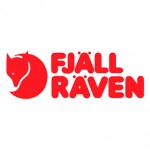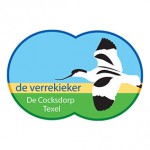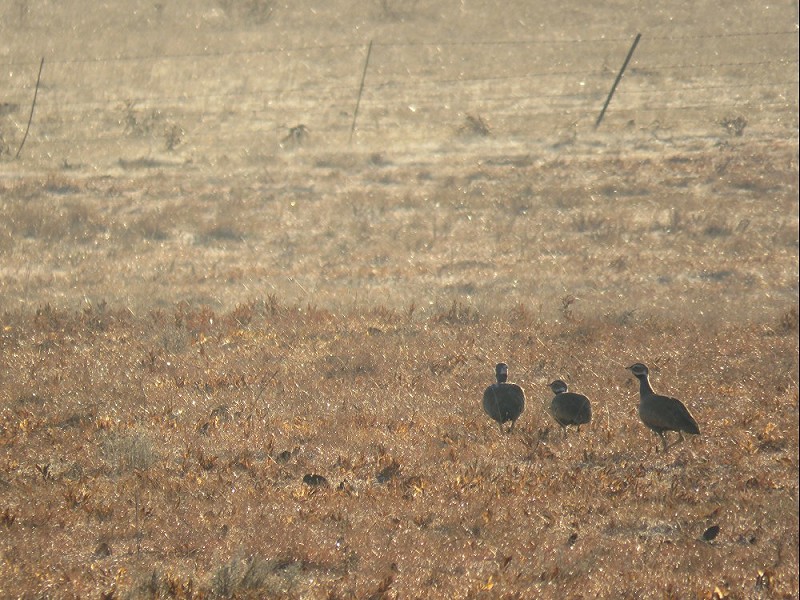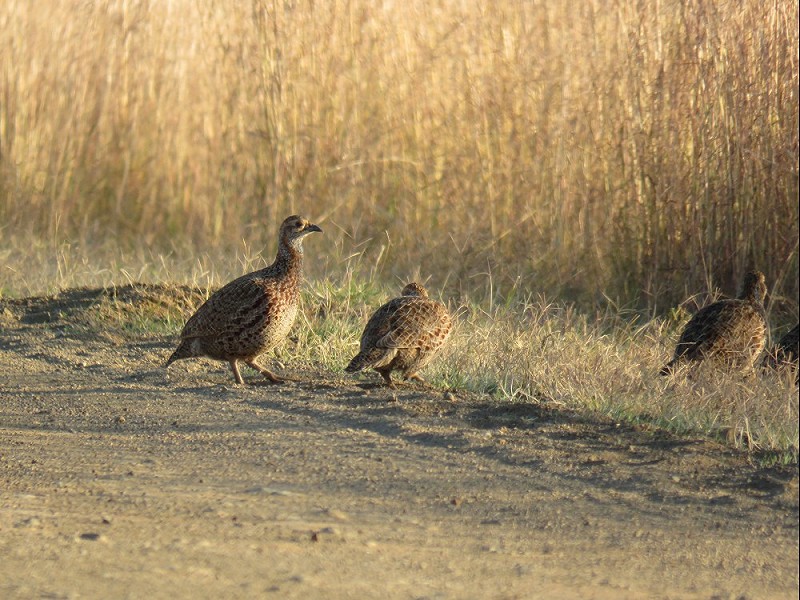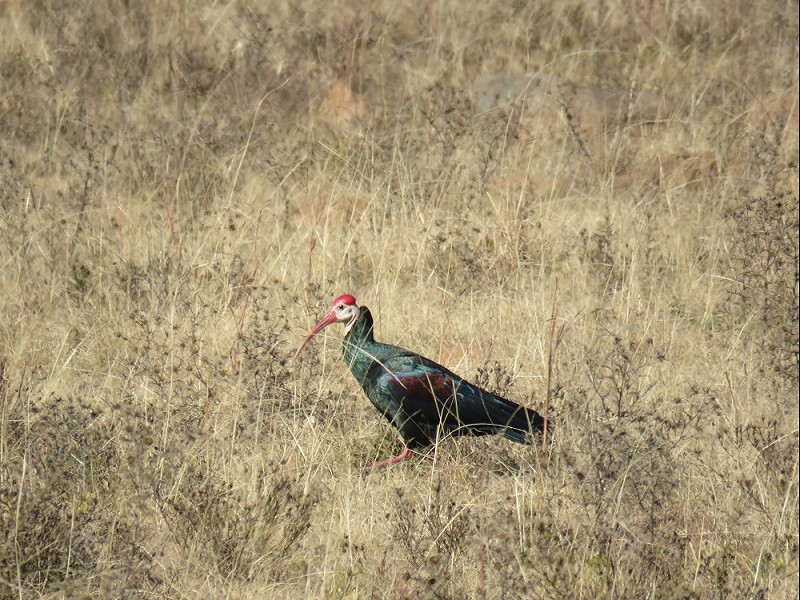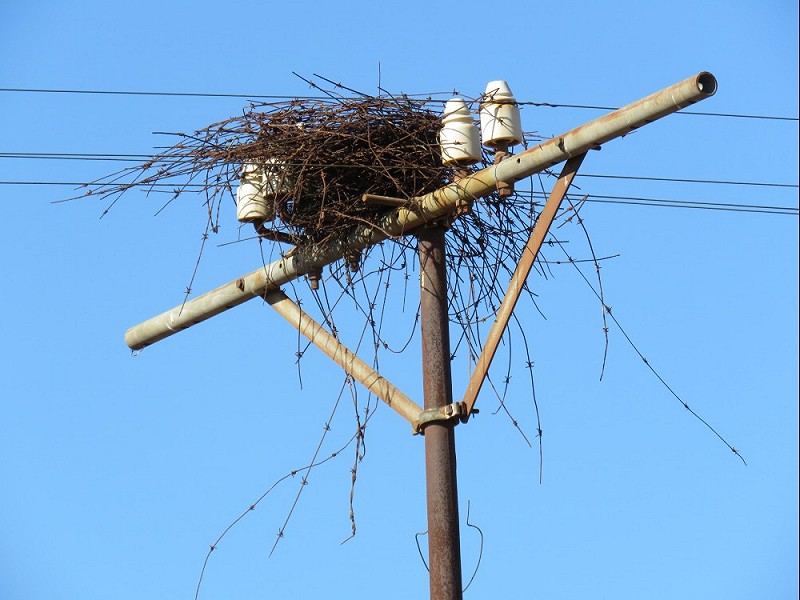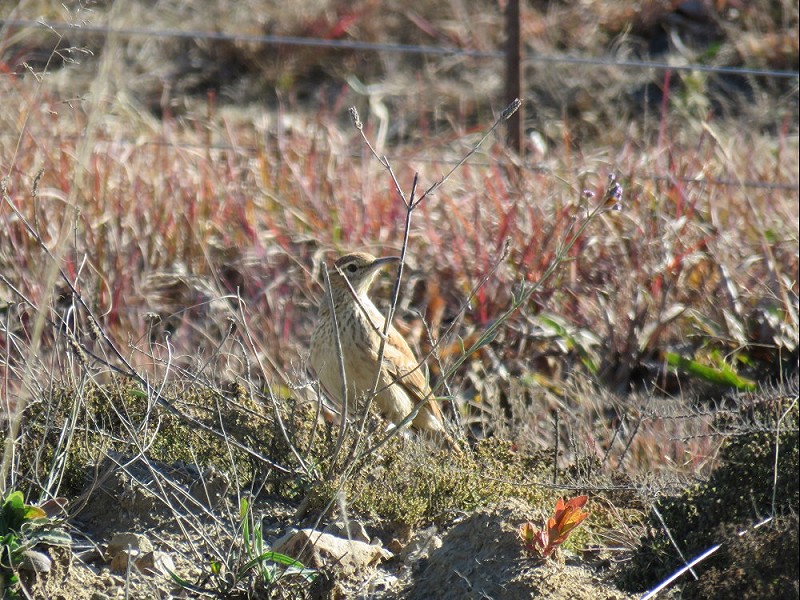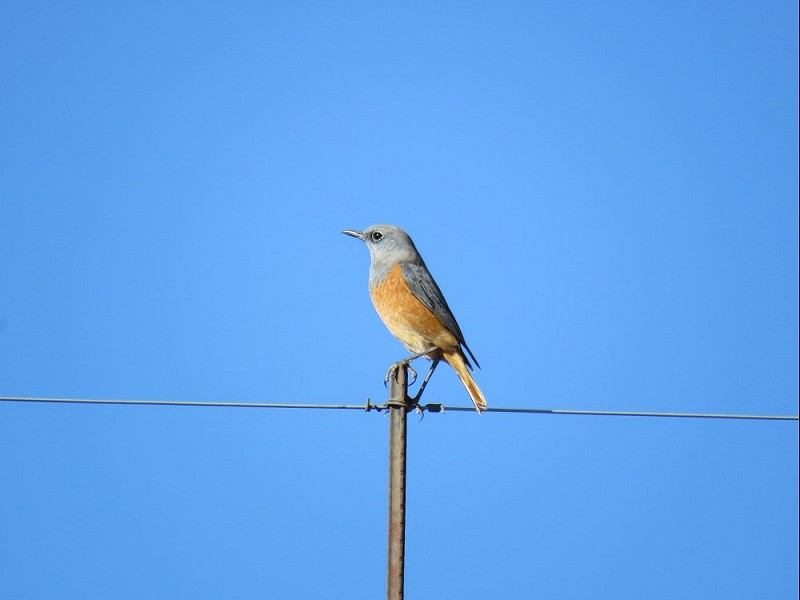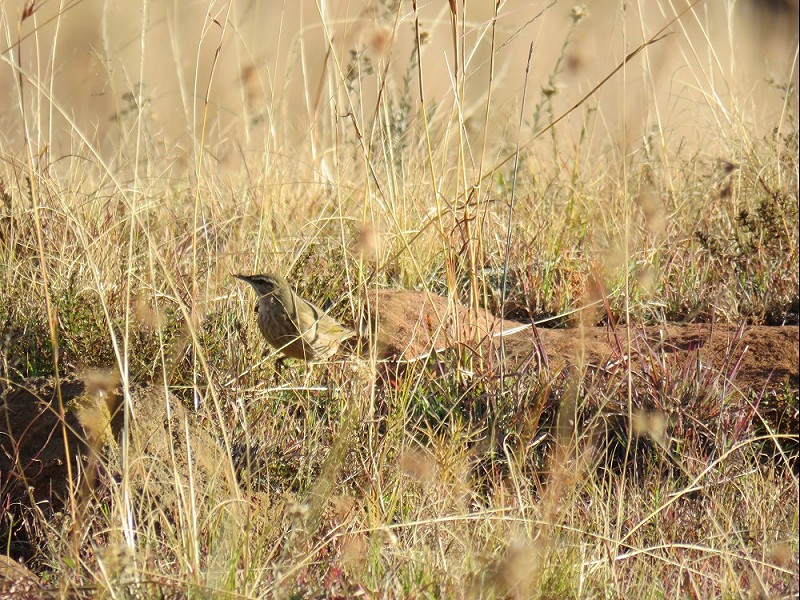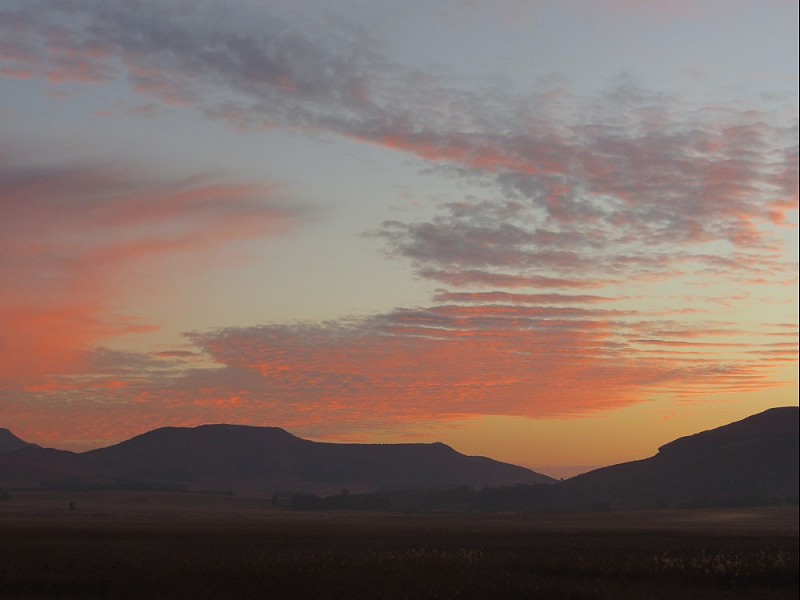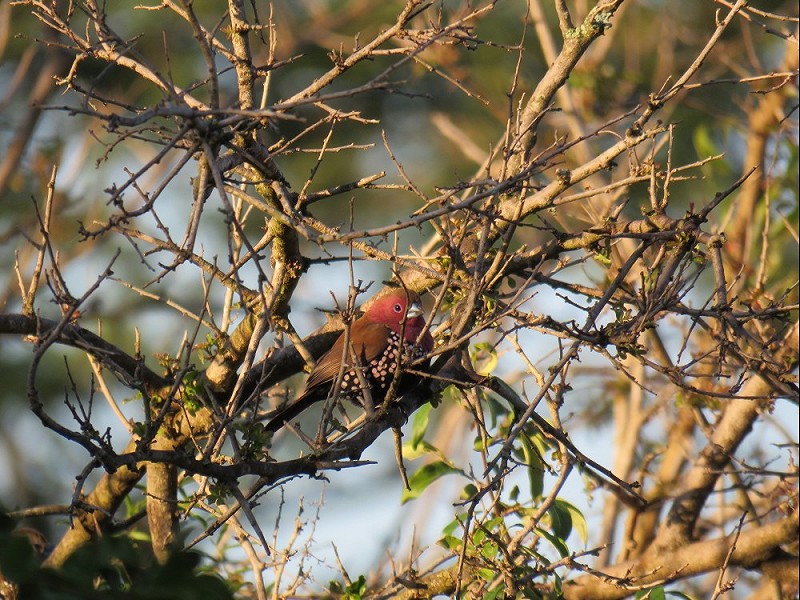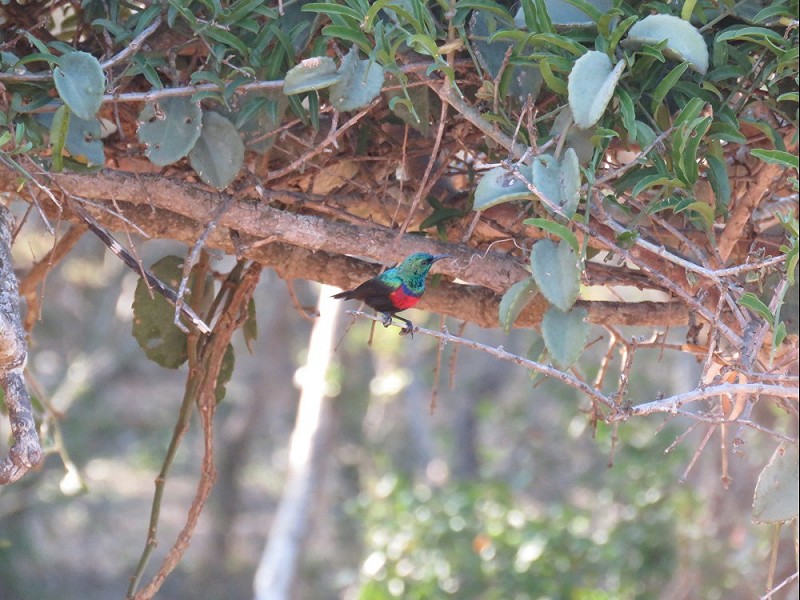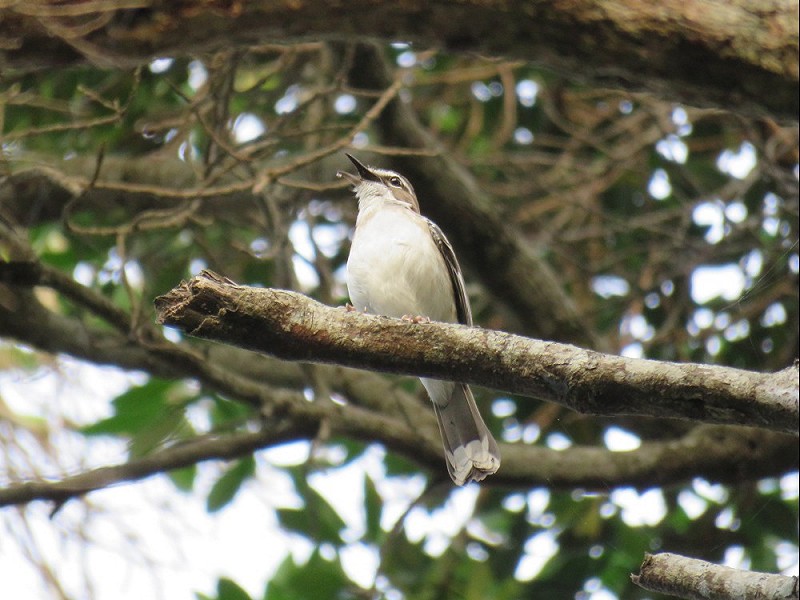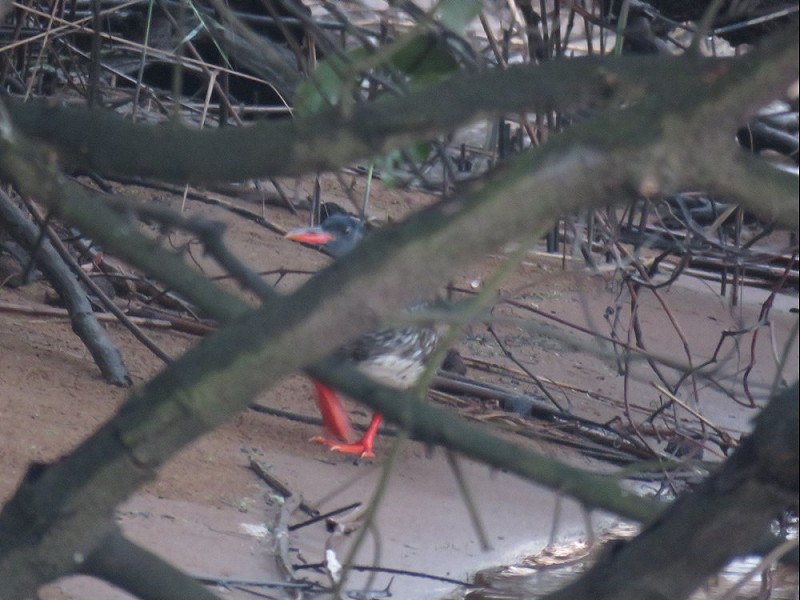Gaaf die Neergaard's (gemist in Mozambique).
Arjan's Biggest Year
In 2016 I will attempt the ultimate in global birding, to break the world record in birdwatching, this involves observing more than 6000 species in a single year!
Like my predecessor Noah Strycker I will count heard-only birds, but I will differentiate between heard-only- and seen species to make sure my list stays comparable.
During my 'Biggest Year' I will raise money for the groundbreaking Birdlife Preventing Extinctions Programme in a collaboration with Vogelbescherming Nederland and the Dutch Birding Association. This programme aims to prevent the extinction of all globally threatened bird species by applying an active, innovative and highly effective methodology.
Arjan's Biggest Year is supported by:
June 2 - 6
11 juni 2016 · Arjan Dwarshuis · 8806 × bekeken
PLEASE MAKE A DONATION NOW!
world.observation.org/arjan
www.arjandwarshuis.com/#biggestyear
June 2nd THE ROLLING HILLS OF WAKKERSTROOM
Last night we had arrived at Wakkerstroom, part of an internationally recognized important bird area and one of the most legendary birding sites in South Africa. We had been invited to stay at the dormitory which is part of the Birdlife South Africa office and through here we had arranged Lucky - the best local guide in the area – to show us around for a full day. Lucky was trained as a bird guide by Birdlife South Africa making him the living example how ecotourism, local communities and conservation go hand in hand.
The landscape around Wakkerstroom is dominated by grassland which in this time of the year cover the area’s rolling hills in a yellow blanket as far as the eye can see. These grasslands are home to several very endangered birds, namely the Botha’s Lark, the Rudd’s Lark and the Yellow-breasted Pipit. These species have all undergone a rapid decline over the course of the last decades due to intensification of agriculture in the Southern Africa and were it not for Birdlife South Africa’s ongoing efforts to protect the last remaining stretches of natural grasslands, they would now all be extinct. A key factor in conserving these birds and their grassy homes is involving local communities and to show them how to benefit from visiting birders willing to see these special birds.
It was still freezing when we made our first stop along the road to Amersfoort and our first specialty of the day was quickly found, several Blue Korhaans foraging alongside flocks of Southern Bald Ibises. Next we drove to a section of grassland – picking up Grey-winged Francolin en route - where our search for one of the rarest Wakkerstroom specialties began, the diminutive Botha’s Lark. We made a grid and slowly walked through the grasslands looking for anything to fly up. It took us a frustrating hour before finally Ethan found 5 birds actively foraging on the deck allowing for good scope views. A big bonus here was a covey of 4 Red-winged Francolins found by Camilla.
After the Botha’s we went after another specialty, the Rudd’s Lark. After having paid a small fee to the local family that owns the land holding a pair of these rare birds, we started our search. We applied the same technique as with the Botha’s, which soon paid off with 3 Yellow-breasted Pipits and indeed, after half an hour of walking and scanning, a Rudd’s Lark!
Thanks to excellent guiding by Lucky we managed to find all the specialties we were looking for before 4 PM, which left us with one hour of birding at the Wakkerstroom Swamp. This proved an excellent choice as we had exceptional views of African Rail and even better, a Spotted-necked Otter chasing fish merely 15 meters away from us! What an exceptionally good day this was, with good quantity, but more important superb quality!
June 3rd MKHUZE
After we had spent the night at Pongola we arrived at the gates of Mkhuze right when the park opened. We drove straight to one of the hides where it is allowed to get out of your vehicle. This hide is surrounded by excellent open sandy forest where the Mkhuze’s main avian attraction, the Neergaard’s Sunbird, may be found. Unfortunately for us road works were ongoing in the Mkhuze, with heavy construction traffic all around, making birding quite difficult.
Luckily the sandy forest surrounding the entrance to the hide was rather quiet and one of the first birds we found here was a stunning pair of Pink-throated Twinspot, a species I had missed here on a previous visit. While we were enjoying these beautiful spotted finches, a pair of the range restricted Rudd’s Apalis started calling from a bush right next to us.
These first two specialties came easy, but the real star – the Neergaard’s Sunbird – took a lot more effort. With persistence we managed to find a nice singing male in the end.
We spent the rest of the day chasing Lemon-breasted Canaries at Bonamanzi Game Reserve, but as expected these always tricky birds proved impossible to find this time of the year. However we ended the day with a totally unexpected surprise. As dusk fell we played the call of Swamp Nightjar at a section of marshy grassland at the edge of the St. Lucia Town and against all expectations – there are hardly any records this time of the year – a bird actually started calling back :)
June 4th FROM A TINY BATIS TO A HUGE ALBATROSS
As soon as the gates to the Greater St. Lucia Wetland NP opened we drove in and straight to the Cape Vidal campsite which is conveniently located amidst beautiful dune forest. We had two big targets in this particular habitat, the Woodward’s Batis and the Brown Scrub-Robin.
The first bird calling after we had stepped out of the car was -indeed- a male Woodward’s Batis and without any further effort we obtained great views of this cracking little bird.
The Scrub-robin took a bit more effort, though, but eventually we found one singing from an exposed branch giving excellent views.
This early success – we even picked up Pale-crowned Cisticola which is very difficult this time of the year – we hit a long dry spell trying for Southern Banded Snake-eagle. The whole afternoon we scanned every corner of the park for this uncommon bird of prey and we found both Black-chested- and Brown Snake Eagle, but not our quarry.
Meanwhile it started to get windy as a rain front approached so Ethan figured that we might try our luck with a sea-watch, this proved one of his better decision so far as we found no less than 5 Indian Yellow-nosed Albatrosses not far from shore, an unexpected year tick making up big time for the Snake-eagle!
As it started raining and it was getting late in the afternoon we drove south towards Dlinze Forest where we spent the night in the very nice Birds-of-paradise B&B, a place I can highly recommend to any birder visiting this area!
June 5th THE FINFOOT!
I am slowly running out of possibilities in this part of South Africa – mainly because of Ethan and Birding Africa’s amazing planning we’ve been doing so incredibly well over the course of the last week – so now it is mainly chasing difficult targets.
After saying goodbye to the wonderful Birds-of-paradise B&B we headed for Dlinze Forest in order to find the endangered Spotted Ground-thrush. This elusive Thrush superficially resembles our Song Thrush, but it is far more difficult to track down.
Just after dawn we made our way down across a beautiful trail through Dlinze Forest looking for any movement on the forest floor, meanwhile it was a real treat to just walk through this pristine rainforest. Suddenly I picked up a movement on the trail and there, for just 5 seconds, sat a fantastic Spotted Ground-thrush! Great!
Our following target was the elusive African Finfoot, for which we drove down to Amlalazi, a small mangrove reserve along the coast. There was one big disadvantage though, it was Sunday so the park was crowded with boats and fisherman.
We tried for it the whole day at various locations along the estuary, but we didn’t get lucky anywhere.
We were on the verge of giving up, but not Ethan! He insisted on pushing on and surely enough, at the very last location we tried just before dusk I suddenly saw an odd shape perched on a low overhanging branch, I whispered ‘Finfoot’! And for the next half hour we witnessed a male Finfoot giving great performance, walking along the rivers’ edge, wow!
We checked in at the wonderful Sea View Manor B&B right at the edge of the reserve and had a fantastic dinner at the restaurant next door to celebrate the Finfoot!
June 6th MALKOHA MAYHEM
After finding that Finfoot yesterdays evening there were very few birds left to target before we hit Pietermariensburg. Basically we had two birds left to find and both had given us a run-around you won’t believe over the course of the last couple of days, namely the Green Malkoha and the Grey Waxbill.
First we tried around Amlalazi again, but there we had no success so we decided to drive down to the small Amatikulu Reserve where we found a perfect little trail running through perfect looking Waxbill and Malkoha habitat.
As perfect as it looked, we failed to get any response to the -by now very familiar- playback of these birds' calls, but then our luck changed as suddenly a Green Malkoha started calling! Finally!
Highly motivated, we continued along the trail when Ethan picked up on the whistling call of a Grey Waxbill and after some mild persuasion with a playback of its call we had stunning views!
After these successes we headed to Sappi Stanger Hide north of Durban to twitch a new South African bird for Ethan, a summer plumaged Yellow Wagtail and after some searching we actually managed to find it.
We dropped Billy off at Durban airport – we would see her again in 3 days – and drove to Pietermariensburg. Here we met up with Jeremy Dickens, a local birder and friend of Ethan who had generously invited us to stay at his moms place. Tomorrow we can finally target a decent list of year birds again!
Arjan Dwarshuis
PLEASE MAKE A DONATION NOW!
world.observation.org/arjan
www.arjandwarshuis.com/#biggestyear
Discussie
Gebruikers van het forum gaan akkoord met de forumregels.










